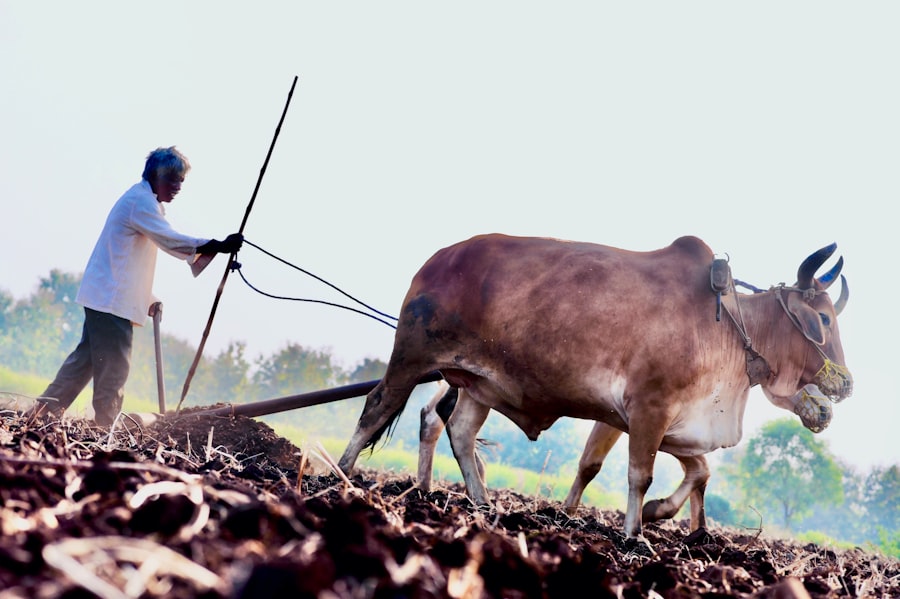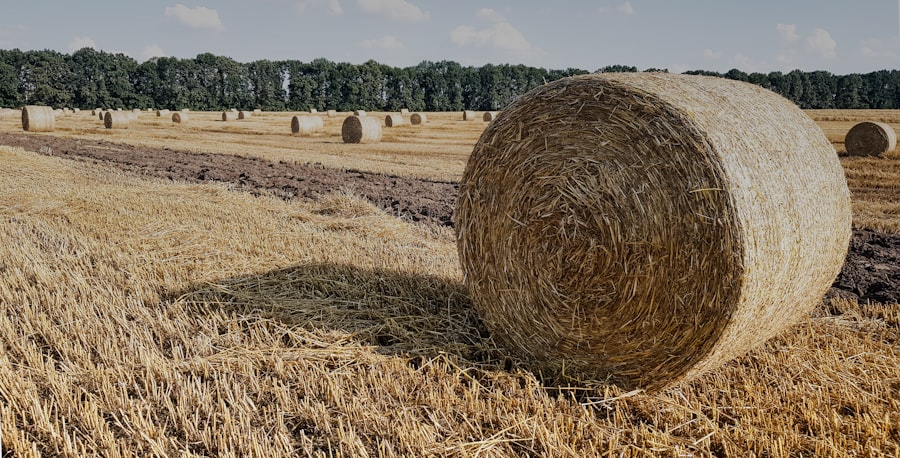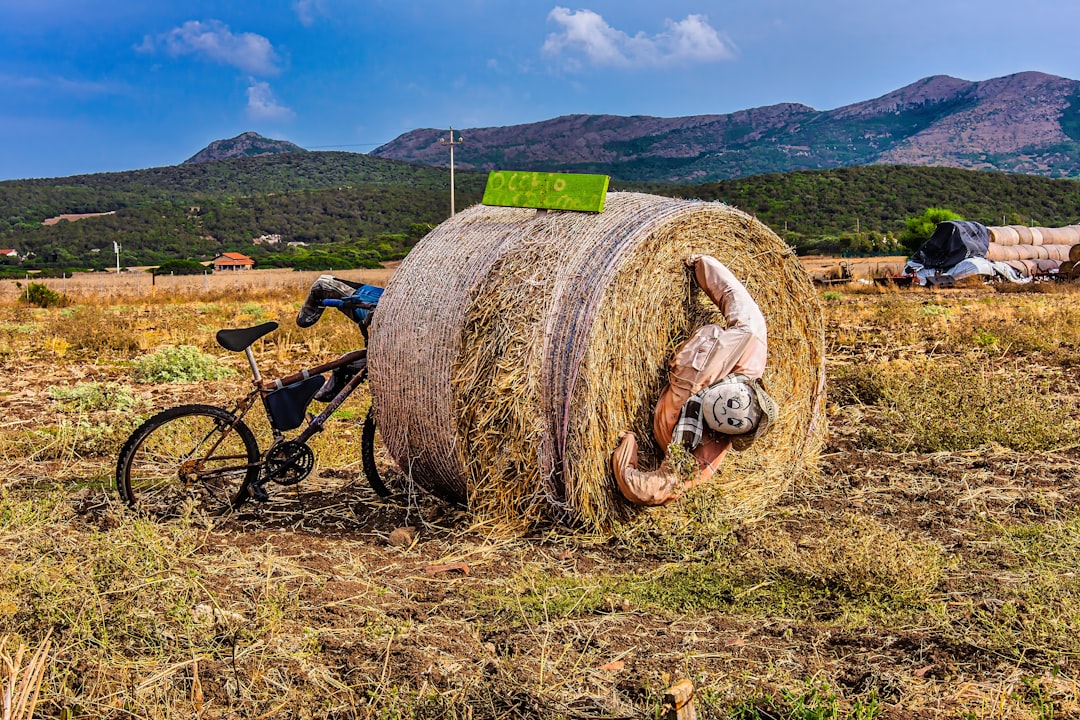Great Plains farming represents a significant chapter in the agricultural narrative of the United States. Spanning across several states, including Nebraska, Kansas, and South Dakota, this region is characterized by its vast expanses of flat land, fertile soil, and a rich agricultural heritage. The Great Plains have long been a cornerstone of American agriculture, producing a substantial portion of the nation’s wheat, corn, and cattle.
The farming practices in this area have evolved over the years, adapting to both technological advancements and the unique challenges posed by the environment. The history of farming in the Great Plains is intertwined with the stories of settlers who ventured into this region in search of opportunity. They transformed the landscape, cultivating crops and raising livestock that would not only sustain their families but also contribute to the economy of the nation.
Today, Great Plains farming continues to be a vital industry, with farmers employing innovative techniques and sustainable practices to meet the demands of a growing population while preserving the land for future generations.
Key Takeaways
- Great Plains farming faces climate and environmental challenges such as drought, extreme temperatures, and soil erosion.
- Soil and water management are crucial for successful farming in the Great Plains, including practices like conservation tillage and irrigation management.
- Crop selection and rotation play a key role in maintaining soil health and productivity, with options like wheat, corn, soybeans, and sorghum.
- Pest and disease management is essential for protecting crops, with integrated pest management and disease-resistant crop varieties being important strategies.
- Equipment and technology, such as precision agriculture and advanced machinery, are important for increasing efficiency and productivity in Great Plains farming.
Climate and Environmental Challenges
The climate of the Great Plains is marked by its extremes, presenting both opportunities and challenges for farmers. The region experiences hot summers and cold winters, with precipitation levels that can vary dramatically from year to year. Droughts are a common occurrence, often leading to water shortages that can severely impact crop yields.
Conversely, heavy rainfall can lead to flooding, which can wash away topsoil and damage crops. These climatic fluctuations require farmers to be adaptable and resilient in their farming practices. In addition to weather-related challenges, environmental issues such as soil erosion and loss of biodiversity pose significant threats to Great Plains agriculture.
Intensive farming practices can deplete soil nutrients and lead to degradation over time. Farmers are increasingly aware of the need to implement sustainable practices that protect the environment while ensuring productivity. This includes adopting conservation tillage methods, cover cropping, and other strategies aimed at preserving soil health and enhancing ecosystem resilience.
Soil and Water Management

Effective soil and water management is crucial for successful farming in the Great Plains. The region’s soil is often rich in nutrients, but it can also be susceptible to erosion and degradation if not managed properly. Farmers are increasingly turning to practices such as no-till farming and crop rotation to maintain soil structure and fertility.
These methods help to reduce erosion, improve water retention, and promote a healthy microbial ecosystem within the soil.
Many farmers rely on irrigation systems to supplement natural rainfall, ensuring that crops receive adequate moisture during critical growth periods.
However, over-reliance on irrigation can lead to depletion of local water sources. As a result, farmers are exploring innovative water conservation techniques, such as drip irrigation and rainwater harvesting, to optimize water use while minimizing environmental impact.
Crop Selection and Rotation
| Crop | Yield (tons/acre) | Profitability (/acre) | Rotation Cycle (years) |
|---|---|---|---|
| Wheat | 3.5 | 500 | 2 |
| Corn | 5.2 | 700 | 3 |
| Soybeans | 2.8 | 600 | 2 |
Crop selection is a fundamental aspect of farming in the Great Plains, influenced by factors such as climate, soil type, and market demand. Farmers often choose crops that are well-suited to the region’s conditions, including wheat, corn, soybeans, and sorghum. These crops not only thrive in the local climate but also play a significant role in the agricultural economy.
However, market fluctuations can impact profitability, prompting farmers to diversify their crop selections to mitigate risk. Crop rotation is another essential practice that enhances soil health and reduces pest pressures. By alternating different crops in a given field over time, farmers can break pest cycles and improve nutrient availability in the soil.
This practice not only contributes to sustainable farming but also helps maintain ecological balance within the agricultural landscape. As farmers become more attuned to the benefits of crop rotation, they are increasingly incorporating diverse planting strategies into their operations.
Pest and Disease Management
Pest and disease management is a critical component of successful farming in the Great Plains. The region’s diverse agricultural landscape provides habitats for various pests that can threaten crop yields. Farmers must remain vigilant in monitoring for signs of infestation and take proactive measures to protect their crops.
Integrated Pest Management (IPM) strategies are gaining popularity among farmers as they seek environmentally friendly solutions to pest control. IPM involves a combination of biological control methods, cultural practices, and judicious use of chemical pesticides when necessary. By understanding pest life cycles and employing targeted interventions, farmers can minimize crop damage while reducing reliance on harmful chemicals.
Additionally, education and collaboration among farmers can lead to shared knowledge about effective pest management techniques, fostering a community approach to addressing these challenges.
Equipment and Technology

Advancements in equipment and technology have revolutionized farming practices in the Great Plains. Modern machinery allows farmers to work more efficiently and effectively, increasing productivity while reducing labor costs. Tractors equipped with GPS technology enable precise planting and fertilization, optimizing resource use and minimizing waste.
Additionally, drones are being utilized for crop monitoring and assessment, providing farmers with real-time data on plant health and field conditions. The integration of technology into farming operations also extends to data analytics and precision agriculture. Farmers can now collect vast amounts of data on soil health, weather patterns, and crop performance, allowing them to make informed decisions about their practices.
This data-driven approach not only enhances productivity but also supports sustainable farming by enabling farmers to tailor their methods to specific field conditions.
Financial and Economic Challenges
Despite the advancements in technology and practices, financial and economic challenges persist for farmers in the Great Plains. Fluctuating commodity prices can create uncertainty for farmers who rely on consistent income from their crops or livestock. Additionally, rising input costs for seeds, fertilizers, and equipment can strain budgets and impact profitability.
Many farmers find themselves navigating a complex financial landscape that requires careful planning and management. Access to credit is another critical issue for many farmers in the region. While some may have established relationships with local banks or credit unions, others may struggle to secure financing for necessary investments in equipment or infrastructure.
Government programs aimed at supporting agricultural development can provide some relief; however, navigating these programs can be daunting for those unfamiliar with the process.
Government Regulations and Policies
Government regulations and policies play a significant role in shaping the agricultural landscape of the Great Plains. From environmental regulations aimed at protecting natural resources to safety standards for food production, farmers must comply with a myriad of rules that govern their operations. While these regulations are often designed to promote sustainability and public health, they can also present challenges for farmers who must adapt their practices accordingly.
In recent years, there has been an increased focus on sustainable agriculture at both state and federal levels. Programs promoting conservation practices or providing financial incentives for environmentally friendly farming methods have gained traction. However, navigating these policies can be complex, requiring farmers to stay informed about changes that may impact their operations.
Collaboration with agricultural organizations can help farmers better understand regulations while advocating for policies that support their needs.
Community Support and Collaboration
Community support plays a vital role in the success of farming in the Great Plains. Farmers often rely on one another for advice, resources, and emotional support as they navigate the challenges of agriculture. Local agricultural cooperatives provide opportunities for collaboration among farmers, allowing them to pool resources for purchasing inputs or marketing their products collectively.
Additionally, community events such as farmer’s markets or agricultural fairs foster connections between producers and consumers. These gatherings not only promote local agriculture but also strengthen community ties by encouraging dialogue about food production and sustainability. As farmers work together to address common challenges, they build resilience within their communities while contributing to a vibrant agricultural economy.
Resilience and Adaptation Strategies
Resilience is a key characteristic of Great Plains farmers who face an array of challenges each season. The ability to adapt to changing conditions—whether due to climate variability or market fluctuations—is essential for long-term success. Many farmers are embracing innovative practices that enhance their resilience against environmental stressors.
For instance, some are adopting agroecological principles that prioritize biodiversity and ecosystem health within their farming systems. By integrating livestock into crop rotations or implementing permaculture techniques, they create more resilient agricultural systems capable of withstanding adverse conditions. Additionally, ongoing education about climate-smart agriculture equips farmers with tools to adapt their practices in response to changing environmental conditions.
Success Stories and Lessons Learned
Amidst the challenges faced by Great Plains farmers, numerous success stories highlight resilience and innovation within the agricultural community. Farmers who have embraced sustainable practices often report improved yields while simultaneously enhancing soil health and biodiversity on their farms. These success stories serve as inspiration for others seeking to navigate similar challenges.
Moreover, lessons learned from both successes and failures contribute valuable insights into best practices for future generations of farmers. By sharing experiences through workshops or online platforms, farmers foster a culture of collaboration that empowers them all to thrive despite adversity. As they continue to adapt their methods in response to evolving conditions, Great Plains farmers exemplify the spirit of resilience that defines this vital agricultural region.
The Great Plains region has long been a cornerstone of agricultural production in the United States, but it faces numerous challenges such as soil erosion, water scarcity, and climate change. These issues are compounded by the need for sustainable farming practices to ensure long-term productivity. An insightful article that delves into these challenges and explores potential solutions can be found on MyGeoQuest. For a deeper understanding of the environmental and economic factors affecting Great Plains farming, you can read more in this related article.
WATCH NOW! Why America’s Heartland Is Disappearing Fast
FAQs
What are the main challenges of farming in the Great Plains?
The main challenges of farming in the Great Plains include unpredictable weather patterns, water scarcity, soil erosion, and pest infestations.
How does unpredictable weather affect farming in the Great Plains?
Unpredictable weather patterns, including droughts, floods, and severe storms, can significantly impact crop yields and livestock production in the Great Plains.
What are the water scarcity issues faced by farmers in the Great Plains?
Water scarcity is a major challenge for farmers in the Great Plains, as the region often experiences limited access to water for irrigation and livestock needs.
How does soil erosion affect farming in the Great Plains?
Soil erosion is a significant challenge for farmers in the Great Plains, as it can lead to loss of fertile topsoil and reduced crop productivity.
What are the common pest infestations that farmers in the Great Plains face?
Farmers in the Great Plains often deal with pest infestations such as grasshoppers, aphids, and other insects that can damage crops and reduce yields.
